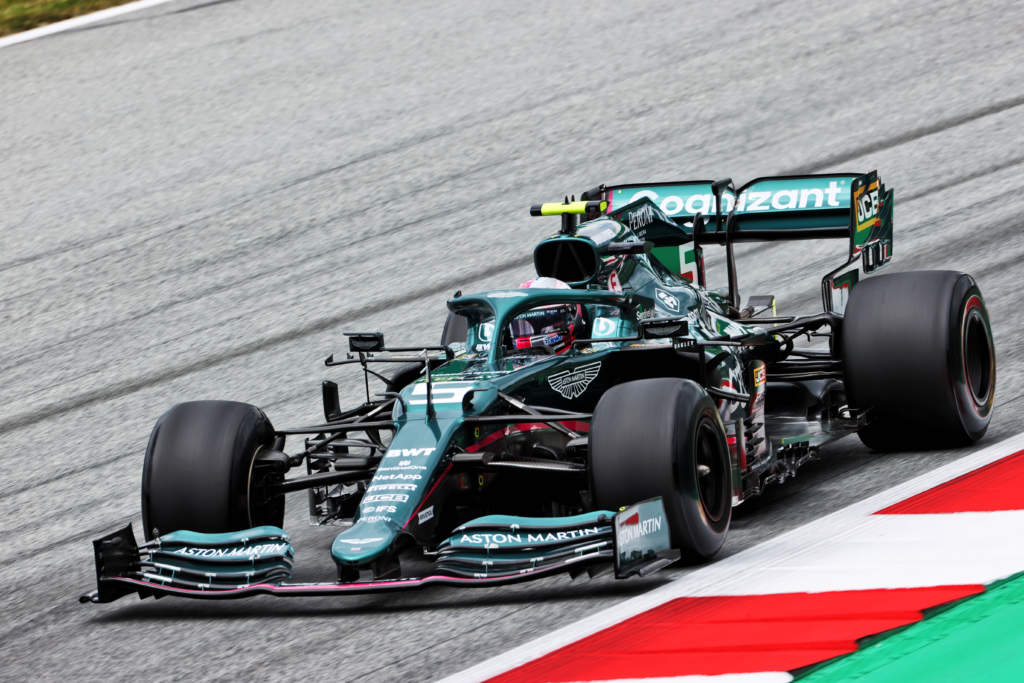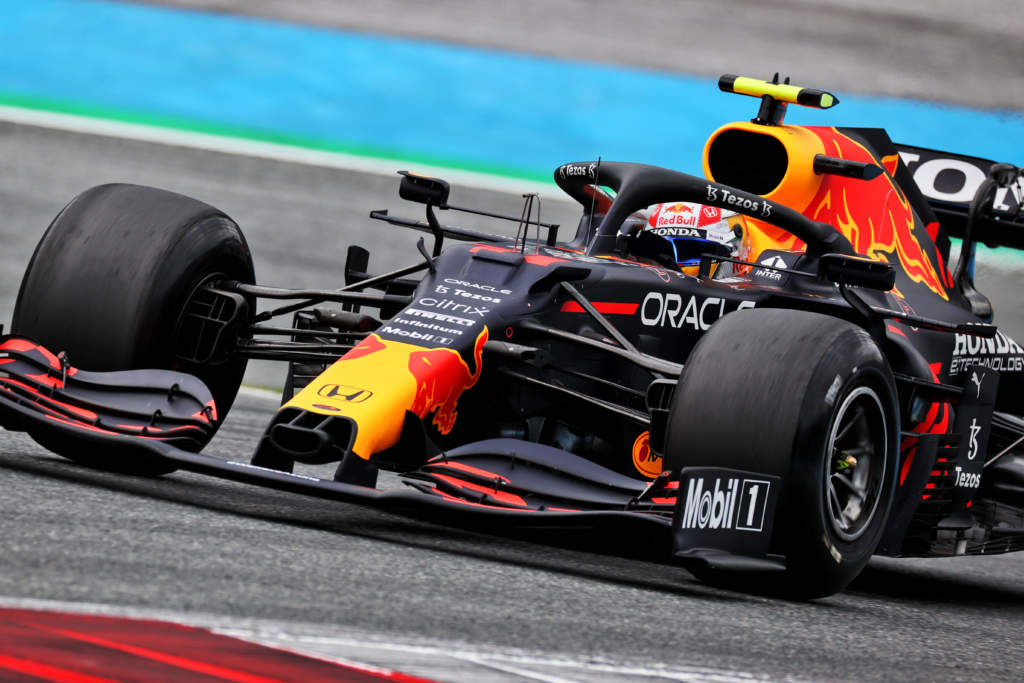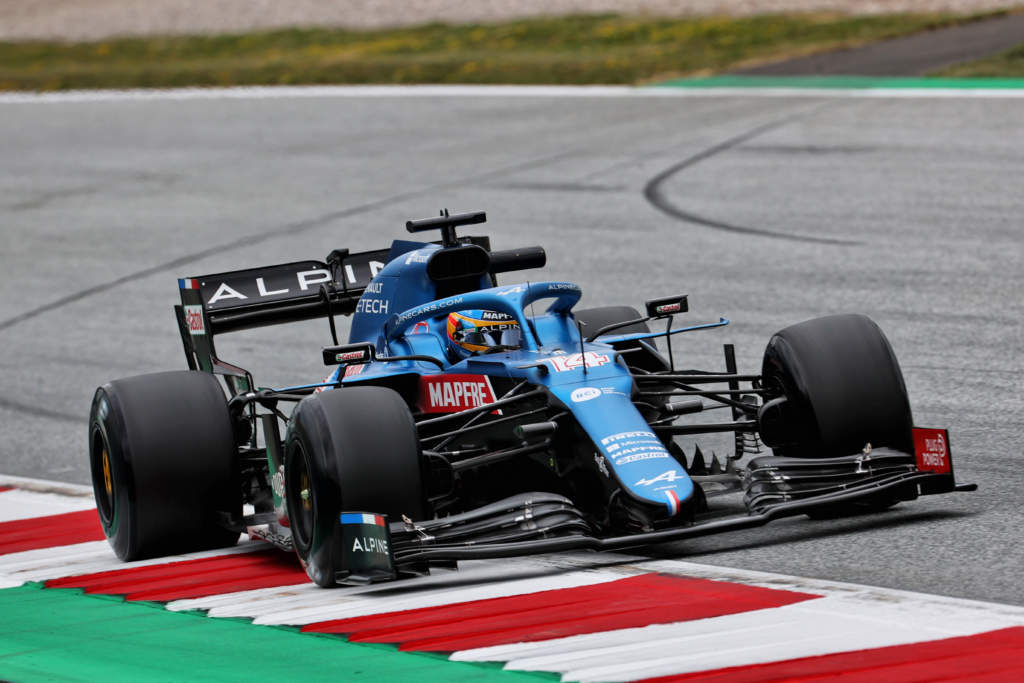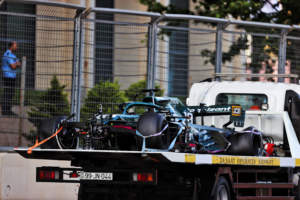Pirelli Formula 1 boss Mario Isola says testing of the prototype tyres featuring a modified rear construction during Friday practice at the Red Bull Ring revealed nothing that should stop them being used regularly from the British Grand Prix onwards as intended.
Each driver had two sets of the prototype rubber, which is being trialled as a response to the failures suffered by Lance Stroll and Max Verstappen in last month’s Azerbaijan Grand Prix, available to run during Friday practice.
The hope was that the running would allow Pirelli to confirm this specification of rear tyre will be used at Silverstone in two weeks and for the rest of the season.
Every driver ran one set of the prototypes in FP1, although half of the field kept back a set to use on Saturday morning after the FIA approved Pirelli’s request to extend the testing window to include FP3 because of the fear of rain today.
The front tyres and the compounds used on both axles remain unchanged, but the modified rear construction features higher cornering stiffness at high loads, and a higher vertical stiffness. This means it can run at lower pressures than the regular rears, with a minimum starting pressure set 2psi lower at 18psi for the prototype rubber.
Pirelli will complete a comprehensive analysis of the data both from today and FP3 tomorrow to confirm its initial impressions, but expects this to support the intention to use the modified rear construction from Silverstone onwards.
“I didn’t have any objections, I didn’t have any negative comments, I didn’t collect anything that makes me think there is not good reason to introduce the prototype in Silverstone,” said Isola, when asked by The Race if the running had revealed anything that made him doubt the modified tyres would be raced at Silverstone.
“We are going to receive the data tonight, so we want to take a bit of time to analyse the data and collect feedback also tomorrow morning.
“But to be honest, I don’t see a reason why we shouldn’t introduce it in Silverstone. The final confirmation will be tomorrow anyway.”

Isola said that the feedback received by the teams suggested the modified rear tyres were behaving in a similar way to the existing ones, which was in line with Pirelli’s expectations based on its indoor testing and simulation work.
The tyres used ran using the C4 compound, equivalent to this weekend’s mediums, meaning it was possible to make a direct comparison.
“The general feedback that I collected is that the proto is behaving in a very similar way compared to the C4 compound baseline,” said Isola.
“The feedback from drivers was positive. Some found a bit more traction in the first laps, and some commented that the new prototype is very similar to the current C4.
“But at the end of the day it was the target, because we know that the new construction is more robust but we didn’t want to change the behaviour and the balance or to ask the teams to make any set-up adjustment when they move to the new construction.
“That was confirmed in general.”
Those drivers who have been asked about the tyres have echoed Isola’s position, with none of the complaints that traditionally accompany the testing of prototype tyres surfacing so far.
“We tried them in P1 and there wasn’t much different on our side,” said AlphaTauri driver Pierre Gasly.
“So, we need to look a bit more in the details but the good thing is that it’s not night and day between the two. So, that’s quite positive.”

Red Bull team principal Christian Horner was also positive about the changes, with the running easing any concern that the modified rear construction could impact the competitive balance up front.
“Credit to Pirelli that they’ve reacted so quickly following Azerbaijan and brought prototype tyres here,” said Horner.
“The initial response from the drivers was pretty benign. It didn’t feel too different from what they’ve previously had, so hopefully that’s a positive thing as well.
“We’d hate at this point of the year for a variable to be introduced that favours one team or the other.”
Alpine executive director Marcin Budkowski echoed Horner’s view, although he did mention that a small difference in balance was detected during his team’s running.
“There’s nothing really untoward about them,” said Budkowski. “What we seem to see is a little bit less rear grip than the equivalent standard construction.
“It’s a bit difficult to assess because we ran them first thing in the morning on a track that was a little bit green, so it could have been influenced by track evolution.
“Fernando [Alonso] ran them for a few laps in FP2 as well and there was nothing surprising there. So it seems like it’s going to be small changes to the car behaviour and balance, but it doesn’t seem to make a whole lot of difference.”

Isola also confirmed that the initial verbal feedback indicated the modified construction, as expected, had not impacted the impact of the tyres aerodynamically.
While the sidewall is stiffer, the reduced pressure compensated for this and ensured there was no significant change there either aerodynamically or mechanically.
McLaren team principal Andreas Seidl confirmed that the increased stiffness did not appear to be having an impact.
“The construction is a bit stiffer, but at the same time we were allowed to run lower pressures,” said Seidl.
“So in terms of the mechanical stiffness this tyre change to the car is not really making a difference.
“We still need to wait now for the analysis of Pirelli together with us in order to come to conclusions, and then we need to wait for what Pirelli is planning to do for Silverstone.”





